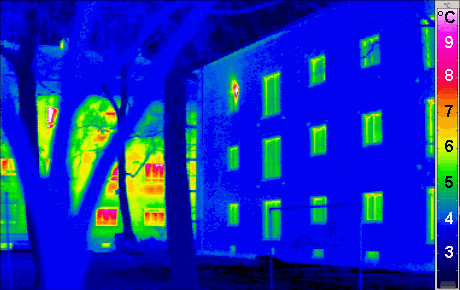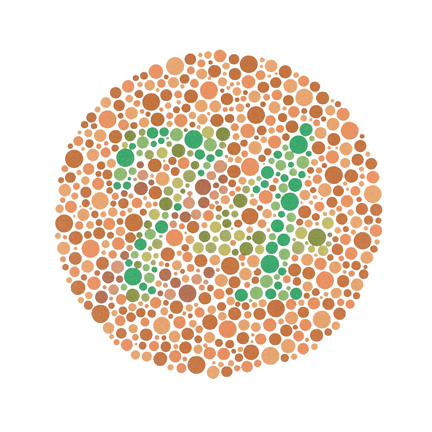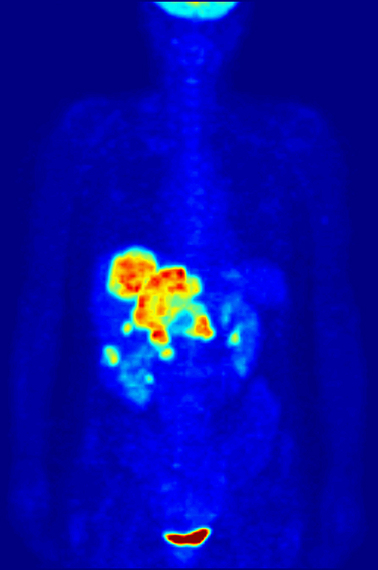
Fireworks, a beautiful example of visible light, are often used to celebrate the start of the New Year. Credit: Colin Legg
As 2015 winds down, we find we have much in the world's events to look back on. One effort to celebrate is the success of this past year being the United Nations' International Year of Light and Light-based Technologies. This worldwide program, with thousands of activities and millions of participants in over 100 countries, sought to - pardon the pun - highlight the many ways light in all of its forms affects our daily lives. Light can impact a wide range of important fields including healthcare, energy, education, communications, manufacturing, and climate study.
Though many of us think of light as the opposite of darkness, it is so much more. The light that we can see with our eyes is but a small fraction of all of the light that exists in the Universe. Light comes in many forms: radio waves, microwaves, infrared light, visible light, ultraviolet radiation, X-rays and gamma rays.
So to commemorate the end of the International Year of Light, we've compiled some of what we consider to be the most surprising or interesting facts about the seven major categories of light. As the countdown starts for 2016, we'll note that the lights of Times Square and the descending crystal ball represent only the tiniest sliver of the truly amazing things that light can do. Light - including its invisible forms - affects us every day, often in ways we don't even realize or notice. Without light and its superpowers, our lives wouldn't be the same.
1) Radio waves are responsible for making radios work (not surprising), but not for delivering any sound to us.

Radio receivers and transmitters receive and then change light waves into sound waves. Credit: NX1Z
Radio waves - some of the longest wavelengths of light -- are often mistaken for their related cousin, sound waves. Most of us experience sound waves every day as they are what transport sounds to our ears. A key difference between radio and sound waves is the environment in which they travel. Radio waves, like all electromagnetic waves (a.k.a. light), can travel freely and forever in a vacuum. Sound waves, on the other hand, are waves that compress the medium (air, for example) they move through. No air, no problem for radio waves. No air, no sound.
Back to how radios work. Radios carry information by overlaying a person's voice or music or what have you onto a moving radio wave at a particular wavelength or frequency. This can be done by changing the spacing between the radio waves and it's called "frequency modulation" or "FM." If the height of the radio waves is altered, this is "amplitude modulation" or better known as "AM". Whether FM or AM, radios contain electronics - including transmitters and antennas -- that can ultimately change radio waves into changes in air pressure. This is another way of saying that the radio converts the radio waves into sound waves, which is what we can hear.
2) The origin of the microwave oven is directly linked to a melted chocolate bar in someone's pocket.
A section of a cavity magnetron. Credit: Pingu Is Sumerian
In 1945, engineer Percy Spencer was researching radar technology at the Raytheon Corporation in Waltham, Massachusetts. Spencer was monitoring equipment that included a magnetron, a device that can generate higher-energy radio waves, or today what we call microwaves. At the time, engineers realized that with these microwaves the wavelengths were short enough that they could be reflected and focused off an antenna that fit into the nose of an airplane - potentially very helpful for fighter plans in World War WWII.
What people didn't know back at that time was that these same microwaves could agitate water molecules, which, among things, could heat the food they were found in. Spencer discovered this property of microwaves by accident when the chocolate bar in his pocket began to melt after standing in front of the magnetron for a while. Intrigued, Spencer then placed other food like popcorn and eggs to see if they too would heat up and cook when placed in front of the microwave-generating magnetron. It would take a couple of decades for magnetrons to become cheap and small enough to fit inside an everyday kitchen appliance. But it's safe to say it was this lucky accident by Spencer that has made countless meals a lot easier for many people.
3) If you think infrared light is all about heat, try pointing your TV remote at yourself and pressing buttons.

Thermograms of buildings and houses are often used to help study heat loss or energy inefficiencies. Credit: Passivhaus Institut
For many people who are familiar with "infrared" light or radiation (which essentially mean the same thing), their association is often with heat. And for good reason. After all, we hear a lot of about infrared products as sources of heat these days in cooktops, space heaters, and saunas. You may also have heard how infrared light is used in thermal imaging (another way of saying "pictures of heat") in everything from military and law applications to making homes more energy efficient.
All of these ties with heat are valid, but that is only part of what infrared light can do. That's because the range of infrared light spans an enormous swath of the electromagnetic spectrum - a thousand times bigger than the "visible light" we can see with our eyes. It's so vast that scientists, engineers, and others who use it often break it up into smaller chunks. The type of infrared light that provides heat is known as "far infrared". Another type is so-called near infrared, which has a bunch of applications in our day-to-day life as well and does not provide any heat. For example, near-infrared light is often used in fiber optics communications, which often brings you your phone, Internet, and cable these days. But perhaps one of the most common uses for near infrared is in your TV, thus allowing you to remain firmly on the couch for as long as you want - though it won't keep you any warmer.
4) Just because someone has "color blindness" doesn't mean they can't see any color.
Do you have any color deficiencies in your vision? If not, you should clearly see the number 74 above. If so, you might see a 21 or no numbers at all. Credit: Wikipedia
The term "color blindness" might conjure up a world that looks like an old school black and white television program. (If you were born in the 1980s or after, you might not have ever seen one of things in person, but trust us, they were real.) While some people with color blindness do experience this, there are actually many ways that condition can manifest itself.
To understand how color blindness works, you have to look at how the human eye detects the colors (red, orange, yellow, green, blue, and violet) of the visible light portion of light. The retinas in the back of our eyes contain millions of light-sensitive nerve cells called "rods" and "cones". The rods deal with the brightness of light, while cones tackle color in three flavors: red, green, and blue. Both rods and cones have chemicals that change when they are hit by light. This causes an electrical signal to travel to the brain along the optic nerve, which ultimately allows our brain to produce an image in color.
There are times when the rods and cones don't respond as they should - and this range of scenarios is often lumped together under "color blindness." But most people who have this condition only have trouble distinguishing between red and green. The reason for this is that the cones in their eyes either lost or never had the correct chemicals to make that distinction for their brain. Other colors, however, remain visible.
5) Most animals cannot see ultraviolet light, but there are exceptions including some butterflies, insects, and maybe Claude Monet.

Bees, important for distributing pollen, can detect some ultraviolet (or "UV") light. Credit: Wikimedia Commons - Jon Sullivan
Ultraviolet, or "UV," as it's often called, is probably best known for its propensity to give us sunburns. In many parts of the world, we are inundated with products that claim to protect us from this form of light. Of course, too much sunlight can be damaging to human skin, but UV also provides health benefits including the production of bone-strengthening vitamin D.
For most living creatures on Earth, UV light falls outside of what can be seen. Many fruits, flowers, and seeds, however, stand out from their backgrounds more distinctly in UV light than in visible light. This has led some insects such as bumblebees to develop receptors that are sensitive to UV. Also, certain types of butterflies can detect UV and use it for communication and even in their mating practices.
In humans, there is a rare condition that lets a small number of people detect UV light. For those with this disorder, known as "aphakia," they lack a lens in their eye. The lens normally blocks UV, so with aphakia, specialized cells at the back of the eye can activate when exposed to UV light. In some cases, this means people with aphakia can actually detect some UV light that appears to them as a whitish-blue or whitish-violet color. One report suggests that Claude Monet, the famous Impressionist painter, acquired aphakia when he had a cataract removed at the age of 82. This may have given him the ability to see "extra" color in his final years of painting.
6) X-rays are useful in doctor and dentist offices - and also for studying black holes and dark matter.
Dental X-rays are used to detect cavities. Credit: Wikimedia Commons/Dmitry G
Most of us encounter X-rays when we have an unfortunate experience with a broken bone or cavity. The concept medical or dental X-rays is pretty simple. Place the thing you want to see inside of (bone, tooth, etc.) between two things: a machine that produces X-rays and then film or an instrument that can detect them. Where more X-rays pass through, you likely have a fracture or a cavity.

Centaurus A, an active galaxy about 12 million light years from Earth, shown in X-ray light collected by NASA's Chandra X-ray Observatory. Credit: NASA/CXC/U.Birmingham/M.Burke et al.
Far away from the doctor's office, we find X-rays coming from other places that don't involve machines. It turns out that many, many things in outer space generate X-rays by themselves. Objects in the Universe glow in X-ray light when they either have a lot of energy or are really hot, as in millions of degrees. In order to study the X-rays from space, scientists have to put their telescopes above the Earth's atmosphere, which, thankfully, blocks this potentially damaging light from ever reaching us here on the surface. Astronomers use X-ray telescopes to look at everything from material in its death spiral around a black hole to the blistering hot remains of an exploded star. Even things like comets and planets can give off or reflect X-rays. Just think of that the next time you're reclining in the dentist's chair.
7) Gamma rays were blamed for changing Bruce Banner into the Hulk but they have a lot of positive uses -- even for human health.

Gamma rays are used in medical diagnostics and therapies for a number of medical issues. Credit: Jens Maus (http://jens-maus.de/)
Gamma rays are the most powerful form of light, and because of that, prolonged exposure to gamma rays can indeed be harmful to the human body. However, gamma rays have many non-destructive and entirely positive uses as well. In other words, as with X-rays, UV, and other types of light, humanity has figured out ways to harness gamma rays for good. For example, oncologists can use gamma rays to attack cancer cells in certain types of radiation therapy. The high-energy of gamma rays can kill the DNA of cancer cells directly or create charged particles that inflict the damage.
Doctors also use gamma rays as a diagnostic tool for studies of the brain, bone, kidney and blood flow. By having a patient swallow a radioactive pill (called a "tracer") that gives off gamma rays, doctors can learn more about these systems without more invasive techniques such as surgery.
Gamma rays have many beneficial applications outside the medical realm. This includes using gamma rays to look for defects in parts such as jet engine turbine blades. Scientists and engineers also use gamma rays to investigate the subterranean strata of oil wells, sterilize medical equipment and even pasteurize certain foods and spices.
8) Bonus Fact: Light is the fastest thing in our Universe, but we can slow it down. Or it can slow itself down depending on where it travels.

This photo of car headlights streaming by was taken in Belfort, France and combines 8 photos, each lasting for 30 seconds. Credit: Thomas Bresson
Light travels at 186,000 miles per second (or, about 670 million miles per hour) in a vacuum. The laws of physics dictate that nothing moves faster in the Universe and scientists have never found anything that's broken that rule.
Light can, however, travel slower. When light travels through something other that a vacuum, a.k.a. total emptiness, it slows down due to its interaction with atoms and molecules. When light moves through air, like in our atmosphere, it slows down just a tiny bit. If it goes through water, it will drop down to about 500 million miles per hour. Every medium or material that light passes through will affect how quickly it moves differently. In fact, researchers can manipulate this fact to make light move slower than a person riding a bike.
Kimberly Arcand and Megan Watzke work for NASA's Chandra X-ray Observatory. They are co-authors of the recently published "Light: The Visible Spectrum and Beyond" by Black Dog & Leventhal, as well as "Your Ticket to the Universe: A Guide to Exploring the Cosmos" by Smithsonian Books. They also lead a successful image exhibition program for the International Year of Light 2015 called "Light: Beyond the Bulb."


